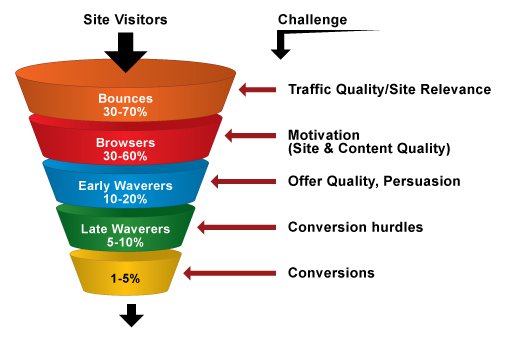8 Common Pitfalls to Dodge in Mobile App Development
Mobile applications have become integral to modern businesses, but their development can be fraught with challenges. Even if a prominent mobile app development company in Dallas or seasoned developer ignores this, the impact can also be worse. Look into these common mistakes that can lead to less user engagement and retention rates.
Let’s get started!
Neglecting Market Research
Pay attention to market research to avoid app failure. Understand your target audience, users’ preferences, pain points, and existing solutions. This data informs app features and functionalities.
- Skipping market research leads to app features and functionalities that may not align with the actual needs of the target audience.
- Apps developed without a clear understanding of the market are likely to fail.
- Neglecting market research can be costly. Investing time, effort, and financial resources into an app that doesn’t resonate with the target audience is a waste.
- Apps that disregard user preferences often lack engagement. Without it, your app will face decreased retention rates.
- An app developed without analyzing the competitive landscape may lack unique selling points.
- Without proper insights, your app might miss the chance to evolve with market demands.
Overlooking User Experience (UX)
Failure to prioritize UX design may result in high bounce rates. Prioritize intuitive navigation, appealing design, and responsive layouts.
Overlooking UX can yield several detrimental consequences for app developers and businesses alike:
- When an app lacks a user-friendly interface or intuitive design, users are more likely to abandon it.
- Poor UX tarnishes the perception of your brand.
- Users are less likely to interact with an app that doesn’t meet their expectations of usability and functionality.
- In a competitive market, users have various alternatives; they won’t hesitate to switch to a more user-friendly app.
- Unsatisfied users tend to express their displeasure through negative reviews and low ratings.
- Addressing UX issues post-launch is expensive and time-consuming.
- Users are less likely to make in-app purchases or engage with paid features if the overall experience is lacking.
Ignoring Platform-Specific Guidelines
Each platform (iOS, Android) has distinct design and functionality guidelines. Overlooking these can lead to inconsistencies, affecting user experience:
- Failure to follow platform-specific guidelines might lead to performance issues.
- App stores have stringent guidelines for app submissions. Not adhering to these guidelines could result in rejection from the store.
- Disregarding platform-specific guidelines may lead to design and functionality discrepancies.
- Non-compliance often leads to increased development and maintenance costs.
- An app that adheres to platform-specific guidelines may appear more professional and trustworthy to users.
- Inadequate compliance with platform-specific guidelines may affect app store visibility and search engine rankings.
Feature Overload
Avoid stuffing your app with unnecessary features. Focus on core functionalities aligned with user needs. An overly complex app can confuse users and lead to disengagement.
Let’s explore the drawbacks associated with this common mistake in app development:
- An overcrowded app interface overwhelms users.
- A surplus of functionalities can significantly impact an app’s performance, causing slower load times, lags, crashes, and increased battery consumption.
- Users might find it challenging to identify and utilize the essential functionalities.
- Each added feature requires development time and resources.
- A cluttered UI affects app aesthetics and usability.
- With an increased number of features, the complexity of testing escalates.
- Each additional feature expands the attack surface, potentially exposing more vulnerabilities.
Skimping on Testing
Rushing through testing phases can be detrimental. Here’s why skimping on testing could severely compromise the success of your app:
- Reduced or rushed testing often leads to undetected bugs and glitches.
- Insufficient testing can result in an app that fails to meet user expectations.
- Skipped testing increases the chances of overlooking critical security loopholes.
- Inadequate testing across different devices, operating systems, and network conditions can lead to compatibility issues.
- While cutting down on testing might save initial costs, it could prove to be a costly mistake in the long term.
- An app marred by bugs and performance issues struggles to gain traction.
- An unreliable app reflects poorly on your brand. Users correlate app quality with the brand’s credibility.
Disregarding Security Measures
Inadequate security measures compromise user data, eroding trust. Implement robust security protocols to safeguard user information from potential threats.
Security in an app or machine learning app development is non-negotiable. Disregarding security measures might seem trivial, but the consequences can be severe, impacting users, reputation, and the business itself.
- Failure to prioritize security leaves the app susceptible to cyber-attacks.
- Inadequate security measures expose users to potential privacy breaches.
- A security breach can tarnish a brand’s reputation irreparably.
- Remedying security breaches can be financially crippling. This may include legal fees, compensating affected users, and system overhauls are costly.
- Non-compliance with data protection regulations can lead to legal complications.
- In the event of a security breach, service interruptions are inevitable.
- Security-conscious users prefer apps that prioritize their data safety.
- The aftermath of a security breach extends beyond the immediate impact.
Neglecting Post-Launch Maintenance
An app’s launch doesn’t mark the end. Regular updates, bug fixes, and feature enhancements are crucial for sustained user engagement and satisfaction. Here’s an in-depth look at the disadvantages:
- Neglecting maintenance can lead to slowed performance, crashes, or functionality breakdowns.
- Failure to update can result in compatibility issues, rendering the app obsolete or dysfunctional on newer devices or OS versions.
- Negative reviews due to unaddressed issues can tarnish a brand’s image. This deters potential users from engaging with the app or the brand itself.
- Poorly maintained apps often experience a decline in user engagement and, subsequently, a loss in revenue.
- Delayed maintenance accumulates issues, making resolution more complex and costly in the long run.
- Ignoring updates to align with new legal requirements may result in legal repercussions, fines, or even the removal of the app from app stores.
Underestimating Analytics
Failure to track app performance through analytics limits your ability to understand user behavior, preferences, and areas for improvement. Utilize analytics tools to gain insights and make data-driven decisions. Let’s delve into these drawbacks:
- Failure to implement analytics means missing out on crucial insights into user behavior, preferences, and interaction patterns within the app.
- Without comprehensive analytics, app development decisions become purely speculative.
- Analytics help identify glitches, bugs, or performance issues in real time.
- Failing to leverage this data limits the app’s ability to tailor content and services, impacting user satisfaction and retention.
- Neglecting analytics may lead to inefficient use of resources and lower ROI.
- Analytics drive innovation by highlighting areas for improvement and new opportunities.
- Failing to harness analytics puts you at a disadvantage against competitors who utilize insights to optimize their apps continually.
Conclusion!
Avoiding these pitfalls can significantly impact the success of your mobile app. By focusing on user-centric design, thorough testing, and continuous improvement, you can create an app that resonates with your audience. This will also foster engagement and growth for your business.




